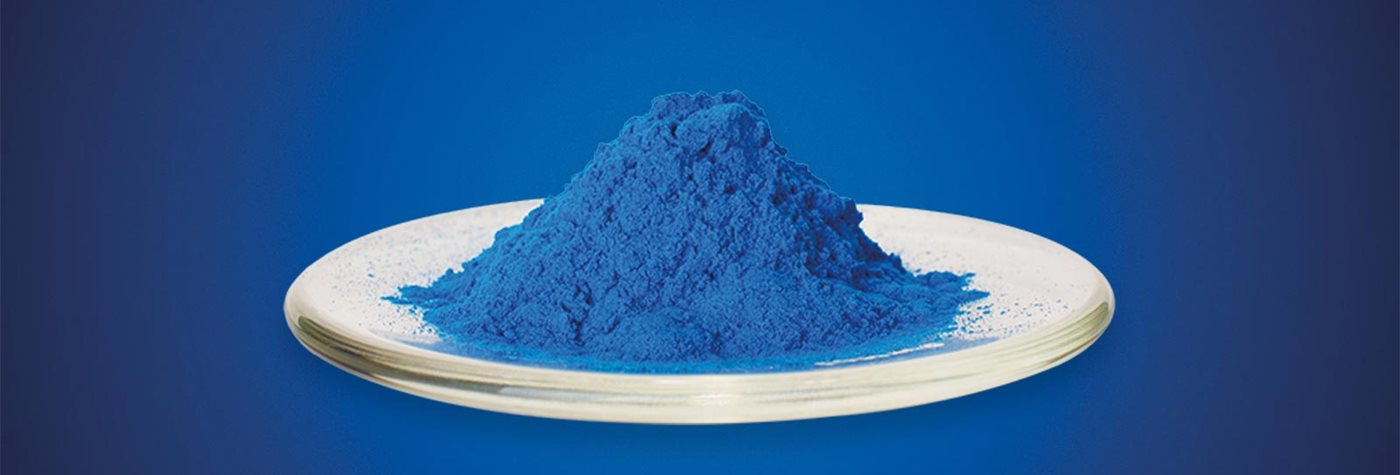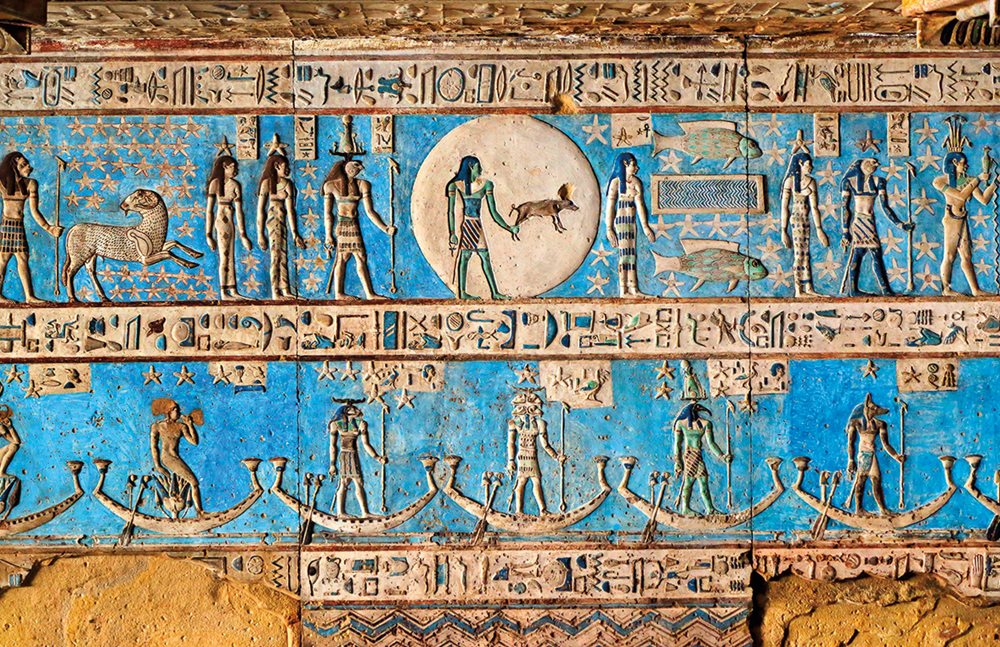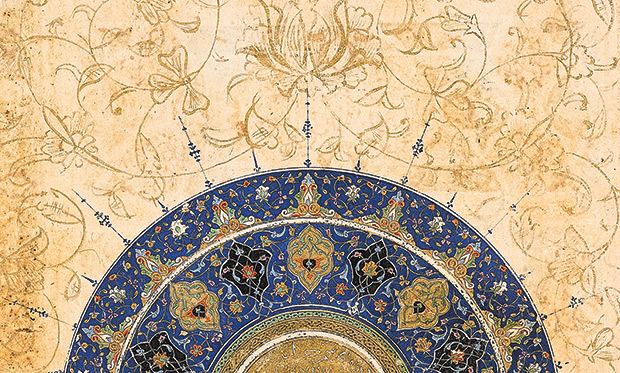A distinct color
The Quest for Blue

Global March 01, 2021 - By
It’s easy to think of blue as a naturally pervasive color.
It’s all around us in clear skies and bodies of water. Yet elsewhere blue appears infrequently, coloring only a handful of minerals and less than 10 percent of flowering plants. Even the feathers of birds, from blue jays to bluebirds, are not truly blue but the result of a biologically sophisticated trick of the eye. The scarcity of blue in the natural world has, for much of history, made it hard to reproduce.
“Other colors were made from natural materials that you perhaps processed, but blue as a pigment didn’t already exist and had to be created," says Mark Pollard, professor of archeological science at University of Oxford.
The earliest humans could pick up chunks of red or yellow ochre or white chalk and use them almost like crayons, and black could be found at the end of every burnt stick. But the transformation of natural materials into the color blue, Pollard explains, required considerable effort and ingenuity.
The quest to unlock the secret of that transformation dates back millennia and spans cultures and civilizations, from Bronze Age Central Asia to early imperial China, from medieval Venice to the modern Maghrib (Islamic North Africa).
The breakthrough came more than 5,000 years ago along the banks of the Nile when early Egyptian chemists first brought the color of the sky down to earth.
The First Blue
“[T]he fields are caused to grow, the fields are made blue, everything alongside the earth is caused to come into being,” reads a hieroglyphic inscription from the third-century-BCE temple of Horus at Edfu, referring to how the annual floodwaters of the Nile nourished the fields. A source of inspiration and worship, blue was also the color of the cosmos, fertility, sustenance and rebirth, according to Lorelei Corcoran, professor of Egyptian art and archeology at the University of Memphis and a translator of the Edfu text. Additionally, the shimmering interplay of sun and sky embodied the spark of life itself, Corcoran explains.
“Blue isn’t immediately a color one would associate with the sun. We usually think of yellow or red,” she says. “But if you look at the headdress that the ancient Egyptian kings wore, at the mask of Tutankhamun for example, you see it’s made out of blue and gold stripes, and it’s been suggested that represents the rays of the sun breaking through the heavens.”
The Egyptian name for the blue they used transliterates phonetically as hsbd iryt, which means “artificial lapis lazuli.” The name reflected the high regard for the semiprecious gemstone that, together with cobalt, azurite, turquoise and indigo, was one of several sources of blue-hued raw materials Egyptian craftsmen used in pigments, amulets, beads, jewelry, scarabs, statuary and textiles.
Still, these raw materials had their limitations.
Of all the colors on a painter’s palette, the most elusive have been blues.
Lapis lazuli was rare and wildly expensive. Mined from a single valley in northeast Afghanistan, a shipment of the gemstone took three years to arrive in Egypt. Cobalt, from the much closer western desert of Egypt, proved most useful in glassmaking and, briefly during the Amarna period (1365–1345 BCE), to decorate pottery. Azurite could be found in the Sinai Peninsula and Egypt’s eastern desert, but it was difficult to carve, and it produced pigments closer to green than blue. Turquoise could also be found in the southwestern reaches of the Sinai, but it was rare and thus expensive. Indigo, meanwhile, had to come from far-off India.
Thus faced with the need for an affordable and readily available blue, the Egyptians invented the world’s first synthetic pigment: Egyptian blue.

Chemically known as calcium copper silicate, the recipe called for mixing chalk or limestone with a copper-rich mineral, typically malachite, together with silica-rich sand and an alkali to fuse it all together. When fired at extremely high temperatures the result was a blue, opaque, glass-like compound ceramic. When ground to powder and mixed with a binder such as oil, it produced enduring paints that could be varied in intensity from a deep, rich lapis-like shade to lighter, pastel ones, all depending on how finely it was ground.
Corcoran’s research shows that Egyptian blue made its debut near the beginning of pharaonic times, around 3250 BCE. With their formula, Egyptians were able to use it on everything from walls and ceilings of temples and tombs to funeral masks and illuminated hieroglyphic texts.
Color from Beyond the Sea
If Benvenuto was indeed being parsimonious with ultramarine, it was with good reason. It was costly: 100 florins for barely a pound (the equivalent of $228 an ounce today), as fellow artist Albrecht Dürer grumbled in 1508. Just a few years earlier, Michelangelo left a painting permanently unfinished in Rome because he couldn’t get his hands on enough ultramarine. Dutch painter Johannes Vermeer died broke in 1675 in part because of his lavish use of the pigment in many of his famous paintings, such as the “Girl with a Pearl Earring” and “Woman in Blue Reading a Letter.”
Ultramarine was expensive because lapis lazuli was no more readily available in Benvenuto’s or Vermeer’s day than it was in pharaonic Egypt. It still had to travel from a single source in Afghanistan’s Sar-i-Sang Valley where it had been extracted in the same way since the seventh millennium BCE, or the Bronze Age: by heating the walls and ceilings of mine shafts with fire and dousing them with ice-cold river water to crack open veins of the gemstone. (Today miners use dynamite, but soot from centuries-old fires can still be seen in the shafts, and though lapis can be found in other locations globally, none are of comparable quality or as bountiful.)

The name of the gemstone comes from the Latin lapis (stone) and lazulum, from the Arabic gizr al-lazaward (the root of azure), itself a loan word from the Persian name for the mineral, lajvard. Yet the name by which its derivative pigment came to be known among Italian and other painters and merchants in the 14th and 15th centuries reflected its enticingly distant origin: ultramarinus, “beyond the sea.”



